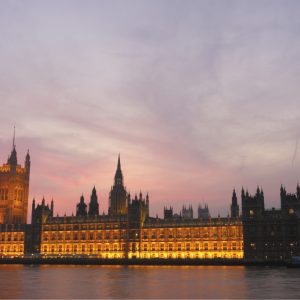
Nutrient neutrality of new residential developments can only occur if the nutrient load, such as additional phosphates and nitrates, created through additional wastewater from a development is mitigated.
It became a requirement in March last year and for new residential developments in and around designated protected areas. This has led to new developments in some councils being blocked.
The DLUHC said that EU laws were “blocking the delivery of new homes”, which included cases where planning permission had already been granted.
Natural England has issued guidance to 62 local authority areas due to these regulations, which includes Somerset, Norfolk, Teesside, Kent, Wiltshire and the Solent.
It added that nutrients entering the river were a “real problem” but the contribution from new homes was “very small”.
“The amendment today will remove this requirement, allowing Natural England greater freedom to develop catchment-specific solutions to the causes of nutrient pollution in partnership with each community, supported by government and private investment,” it added.
The government department added that the amendment could mean that developers could begin construction on homes blocked by nutrient neutrality in a matter of months.
The DLUHC continued that it was doubling the investment into the Nutrient Mitigation Scheme run by Natural England to £280m to ensure it was sufficient to offset the small amount of additional nutrient discharge for 100,000 homes between now and 2030.
The government added that it would work with the housebuilding industry to ensure larger developers to make an “appropriate and fair contribution to this scheme over the coming years” and was discussing the right structure and approach with the Home Builders Federation.
The DLUHC said that it would launch Protected Site Strategies, which Natural England and local communities would work together with, “set protected sites on the path to recovery in the most affected catchments with the highest housing demand”.
The department added that it would ensure new homes “do not place undue stress on already stressed local water networks” by consulting on new requirements for Sustainable Drainage Solutions to reduce pressure on storm overflows from new homes and flood risk.
Secretary of State for Levelling Up, Housing and Communities, Michael Gove MP, said: “We are committed to building the homes this country needs and to enhancing our environment. The way EU rules have been applied has held us back. These changes will provide a multi-billion-pound boost for the UK economy and see us build more than 100,000 new homes.
“Protecting the environment is paramount which is why the measures we’re announcing today will allow us to go further to protect and restore our precious waterways whilst still building the much-needed homes this country needs.
“We will work closely with environmental agencies and councils as we deliver these changes.”
Secretary of State for Environment, Food and Rural Affairs Thérèse Coffey said: “These new plans will cut nutrients and help support England’s precious habitats whilst unlocking the new homes that local communities need.
“We are going to tackle the key causes of nutrients at source with over £200m of funding to reduce run off from agriculture and plans to upgrade wastewater treatment works through conventional upgrades, catchment approaches and nature-based solutions.
“This builds on the key commitments made in our five-year strategy – our Environmental Improvement Plan – as well as our Plan for Water which brings forward more investment, stronger regulation and tougher enforcement to protect our rivers.”















